GTS- Earth's Physical Features
1/4
There's no tags or description
Looks like no tags are added yet.
Name | Mastery | Learn | Test | Matching | Spaced |
|---|
No study sessions yet.
5 Terms
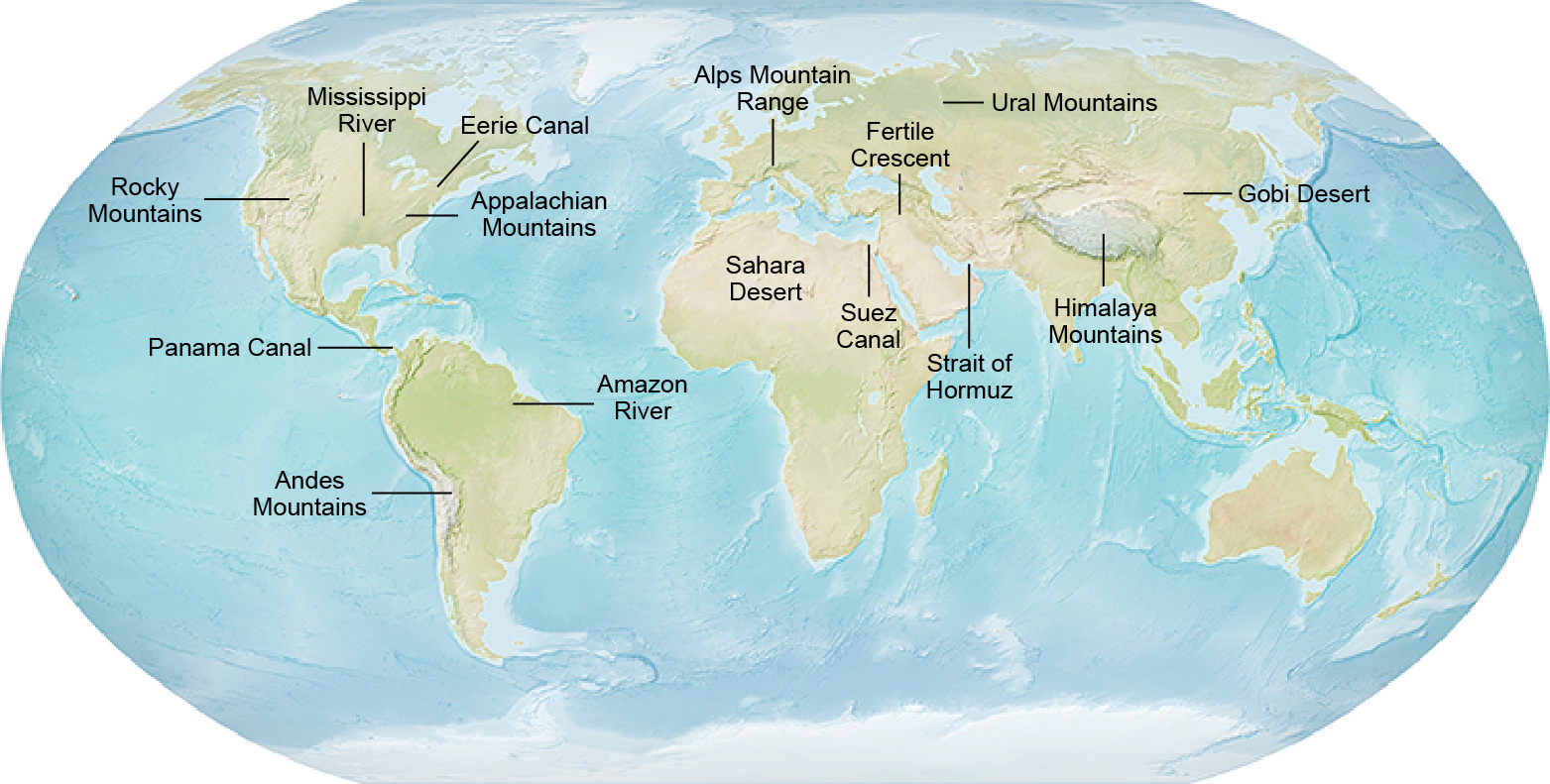
North America PF
Appalachian Mountains: A mountain range running north-south in Eastern North America. The Appalachians contain large deposits of coal
Mississippi River: Starting in Minnesota down to Gulf of Mex. The Mississippi River has served as host to several significant populations and civilizations, a barrier to travel, and a significant avenue for trade.
Rocky Mountains: Stretching north-south over 3000 miles from British Columbia in Canada to New Mexico, the Rockies are the tallest mountain chain in North America.
Erie Canal: Built between 1817 and 1825, the Erie Canal cuts across New York State, creating a navigable water route from the Great Lakes to the Atlantic Ocean (via New York City).
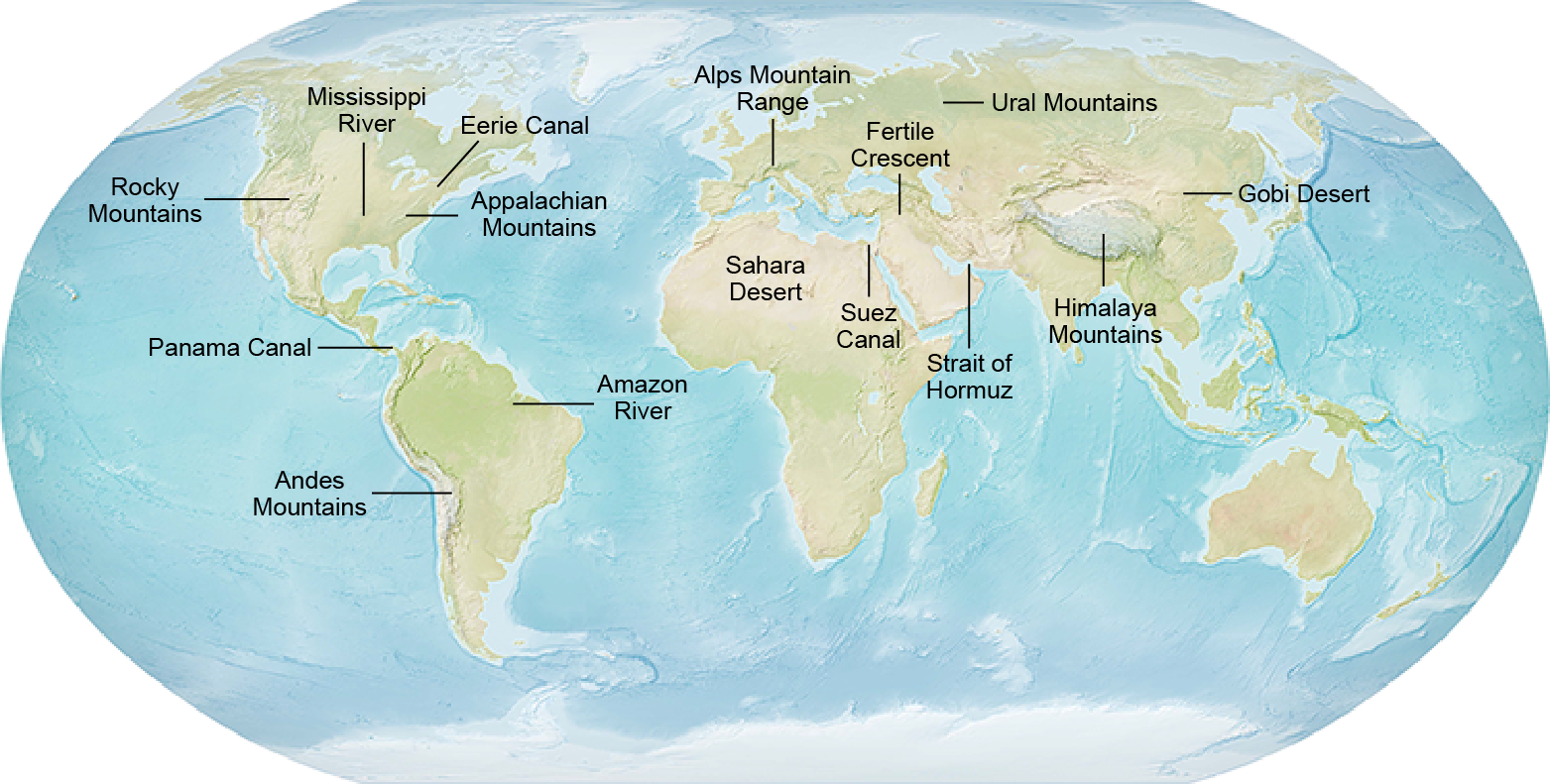
South America PF
Panama Canal: Cutting across the Isthmus of Panama, the Panama Canal connects the Pacific and Atlantic Oceans.
Andes Mountains: The longest mountain range in the world, the Andes Mountains run north-south along the entire western side of South America. They are also the second-highest mountain range in the world.
Amazon River: The second longest river in the world, the Amazon discharges more water than any other river. In fact, 20% of all the freshwater discharged into the ocean comes from the Amazon.
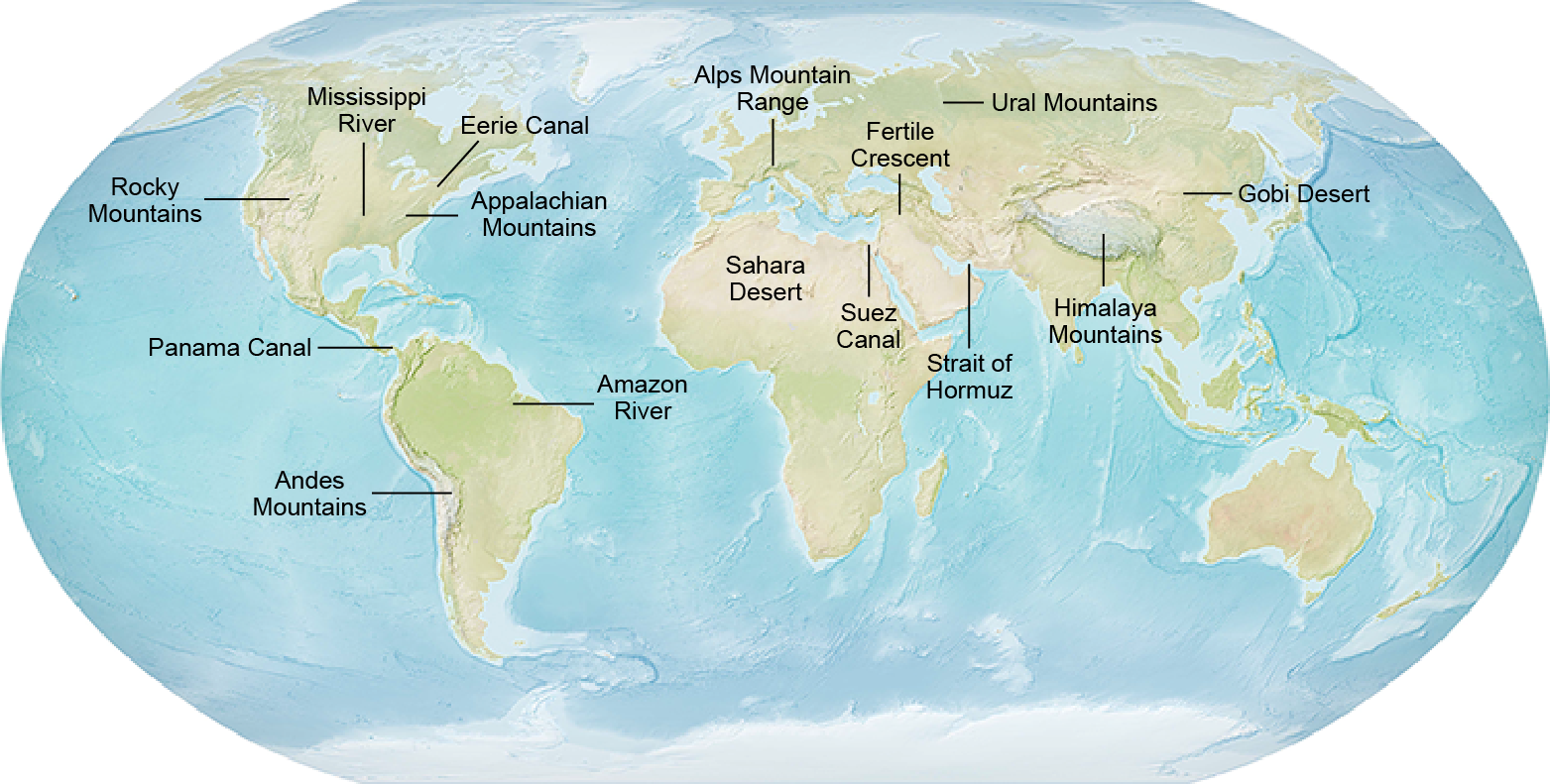
Europe and Asia PF
Alps: The tallest mountain range contained completely in Europe, the Alps run from Austria to France. They greatly influence weather across western European countries.
Himalaya Mountains: The tallest mountain range in the world, the Himalayas are home to nine of the ten tallest peaks in the world. The range runs in a crescent shape separating China from the Asian subcontinent.
Ural Mountains: Divides Continental Europe from Asia.
Gobi Desert: The largest desert in Asia, the Gobi is the fifth-largest desert in the world, covering northern and northwestern China and southern Mongolia. The Gobi Desert is the result of the Himalayas, which block rain clouds from the Indian Ocean. Unlike a traditional sandy desert, the Gobi Desert is composed mostly of rock.
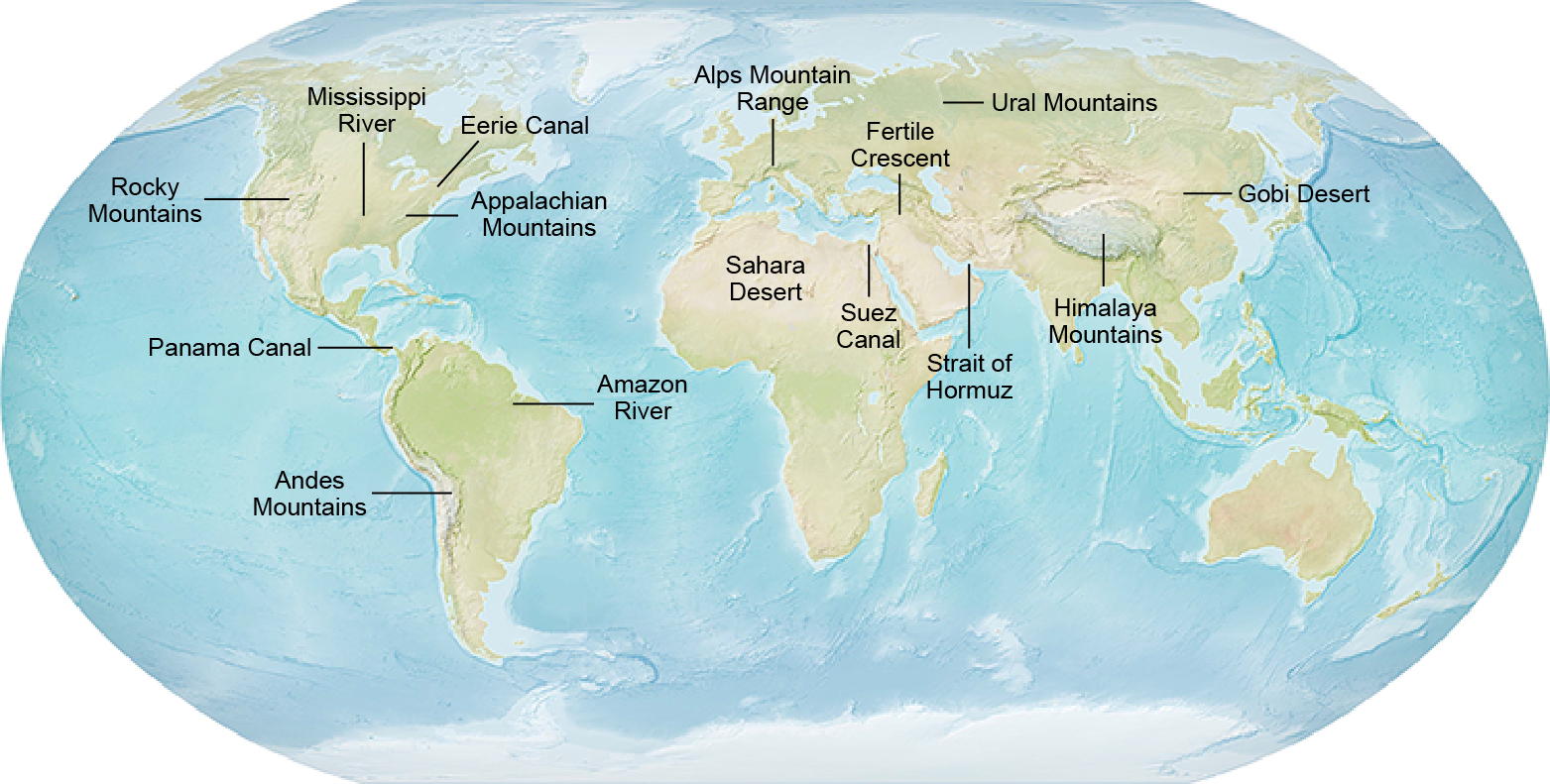
Middle East PF
Fertile Crescent: An area in the Middle East stretching from the Persian Gulf through Iraq and Jordan, and into northern Egypt. It is called the Fertile Crescent because it is shaped like a crescent moon and it is notably more fertile than all of the area surrounding it. The Fertile Crescent is considered to be the birthplace of civilization because the first civilizations developed around the Tigris and Euphrates Rivers, both of which lie primarily in the crescent.
Strait of Hormuz: The narrow stretch of water between Iran and the United Arab Emirates that serves as the only outlet from the Persian Gulf.
Suez Canal: Completed in 1869, the Suez Canal is a man-made waterway in Egypt that connects the Mediterranean Sea to the Red Sea. As a result, ships no longer had to sail around Africa to travel between Europe and South Asia.
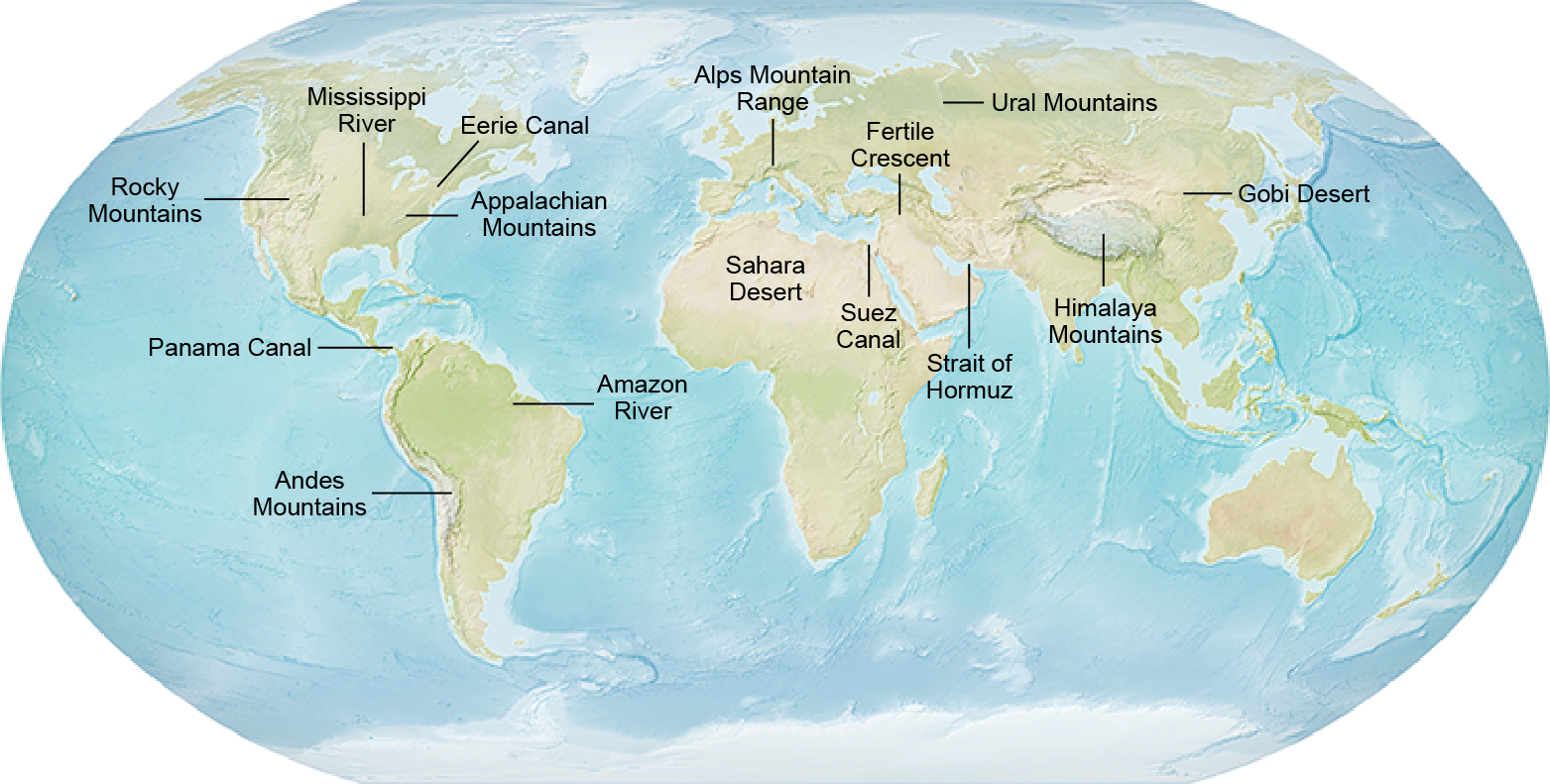
Africa PF
Plateaus: As a result of prehistoric volcanic activity, large areas of the continent of Africa are on a plateau thousands of feet above sea level. East Africa and Ethiopia especially contain many high plateaus.
Sahara Desert: Third in size only to Antarctica and the Arctic, the Sahara Desert is the largest hot desert in the world. Covering most of North Africa, it is of similar size to the entire United States. It is a mixture of rocky areas and tall sand dunes.
Mount Kilimanjaro: The highest mountain in Africa, it reaches 19,341 ft above sea level and is the highest free-standing (not part of a larger mountain range) mountain in the world. It is also the highest volcano in Africa and in the whole of the Eastern Hemisphere.